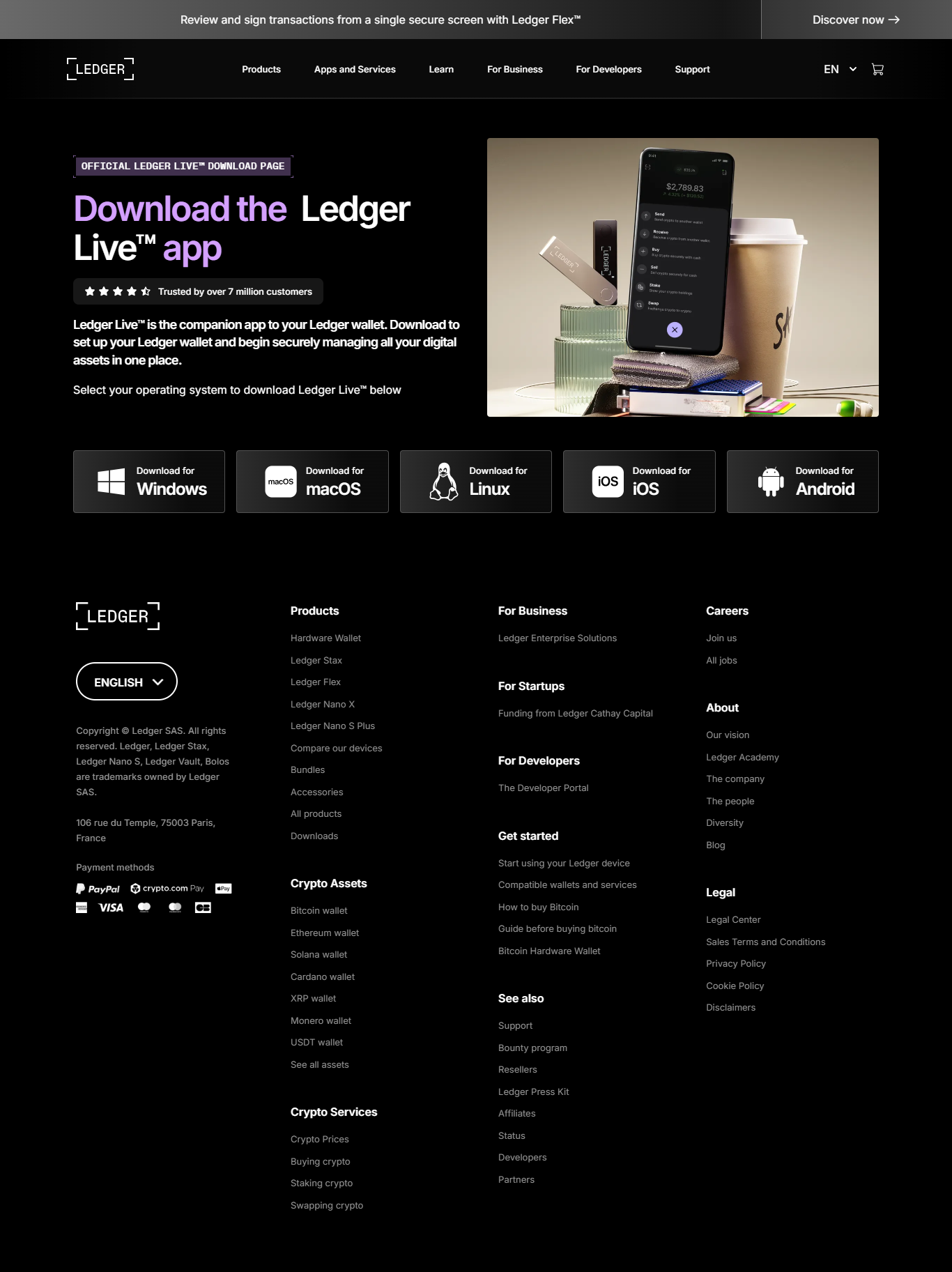Full Setup & Security Guide
Step 1 — Official Ledger Live Download
Download Ledger Live only from Ledger.com/start. Select your operating system and follow the installer prompts. Ledger Live performs authenticity and firmware checks when you connect your device.
Step 2 — Initialize Your Ledger Device
When your new Ledger powers up, create a secure PIN and write down the 24-word recovery phrase exactly as shown. Keep the recovery phrase offline (paper or metal backup). Do not share it with anyone.
Step 3 — Verify Device Authenticity
Use Ledger Live’s built-in verification tool. A failed check could indicate tampering — if so, contact Ledger Support and stop using the device.
Step 4 — Install Only Necessary Apps
Install blockchain apps (Bitcoin, Ethereum, Solana) as needed via Ledger Live’s Manager. Each app unlocks support for its corresponding asset types.
Step 5 — Managing Transactions & Web3
To send crypto, always confirm the address on your Ledger device’s screen. Connect to Web3 dApps through Ledger’s extension or WalletConnect integrations; sign with the device for secure approval.
Advanced Security Tips
- Never share your recovery phrase — Ledger will never ask for it.
- Use a metal seed backup for long-term durability against fire/water.
- Keep firmware and Ledger Live updated via official channels.
- Use passphrase feature only if you understand its implications (adds complexity).
Why Self-Custody Matters
Self-custody puts you in control of private keys — preventing exchange risks such as withdrawal freezes, insolvency, or custodial mismanagement. For long-term crypto holders, hardware wallets like Ledger are the industry standard for protecting substantial holdings.
